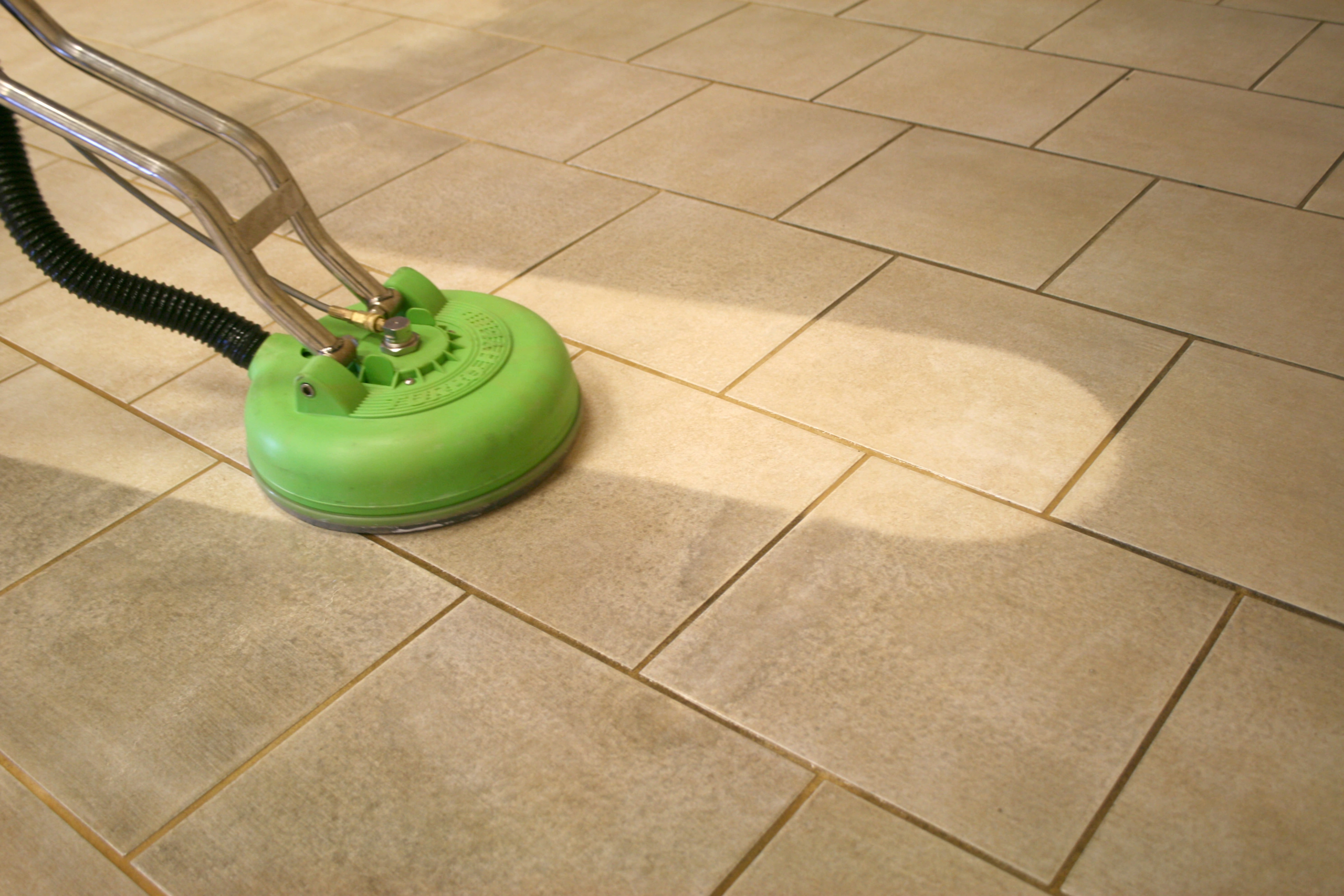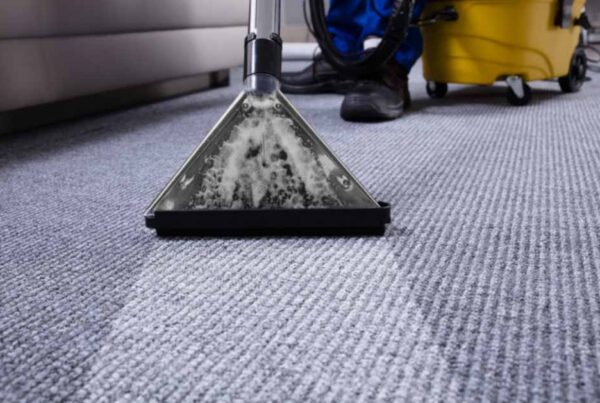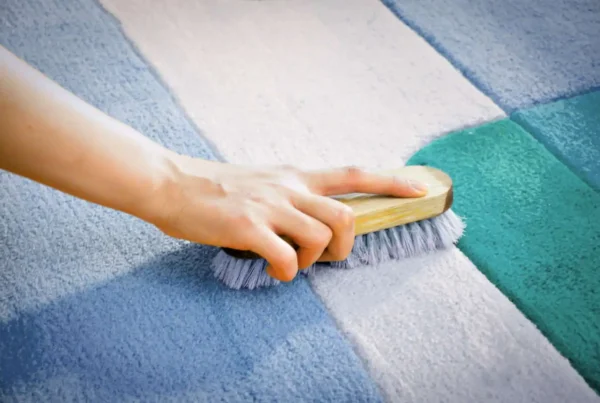Cleaning floor tile grout and grout stains can be daunting, but it’s necessary to maintain the beauty of your tiles. However, there’s good news! You can achieve sparkling clean grout without strenuous scrubbing. This article will explore practical methods for how to clean floor tile grout without scrubbing and with minimal effort.
Understanding the Importance of Clean Grout
Before we dive into the cleaning process, let’s discuss why clean grout matters. Understanding the importance of clean grout, shower grout, white grout, and any grout is essential in maintaining any tiled surface’s long-term integrity and aesthetics. While often overlooked, grout plays a pivotal role in holding tiles in place and preventing water and debris from infiltrating beneath them. When grout becomes dirty or stained, it not only detracts from the tiles’ visual appeal but also compromises its structural integrity, leading to potential water damage or mold growth. Regular grout cleaning not only preserves the original beauty of the tiled area but also extends the installation’s life by preventing erosion and deterioration. Furthermore, clean grout promotes a healthier indoor environment by minimizing allergen buildup in porous grout lines. Thus, recognizing the significance of clean grout is vital for the durability and aesthetics of tiled surfaces in homes and commercial spaces.
Assessing the Type of Grout
Assessing the type of grout is a critical step in any tiling project, as it directly impacts the durability and aesthetic outcome of the installation. Grout can be broadly categorized into two main types: cement-based and epoxy. Cement-based grout, the most common choice, offers affordability and ease of use, making it suitable for most applications. It comes in sanded and unsanded varieties, with sanded grout ideal for wider joints and heavier tile, while unsanded grout is better for narrow joints and polished tiles. On the other hand, epoxy grout, composed of epoxy resins and hardeners, is a more costly but highly durable option known for its resistance to stains, moisture, and cracking. Its shiny finish can enhance tiles’ visual appeal, but its application requires precision and expertise. Ultimately, the choice of grout should align with the project’s specific needs, considering factors such as tile type, location, and desired longevity.
Gathering Your Cleaning Supplies
Gathering your cleaning supplies, including cleaning solutions, brushes, cloths, and protective gear, is a crucial initial step in ensuring a thorough and efficient cleaning process for your home or workspace.
Preparing the Area
Preparing the area before cleaning is essential for safety and effectiveness. Begin by removing any obstacles or items from the space you’ll be tending to provide unrestricted access. It’s also important to take proper safety precautions, such as ventilating the area if using strong cleaning chemicals and protecting any sensitive surfaces or belongings that may be nearby to prevent any potential damage. Lastly, ensure ample lighting in the area to spot and address dirt or stains effectively.
Applying a Homemade Grout Cleaner
Applying a homemade grout cleaner, such as a mixture of baking soda, water, or vinegar, can be an eco-friendly and cost-effective way to tackle grime and stains in your tile grout. Spread the solution along the grout lines, let it sit for a few minutes, and then use a brush or cloth to gently scrub and lift away dirt before rinsing thoroughly.
Using Commercial Grout Cleaners
Using commercial grout cleaners can be a convenient and effective way to tackle stubborn grime and stains, as these specialized products are formulated to dissolve, lift, and remove dirt from grout lines, simplifying the cleaning process.
The Power of Steam Cleaning
The power of steam cleaning lies in its versatility and effectiveness in cleaning a wide range of surfaces and materials. High-temperature steam can effectively eliminate dirt, grime, and even stubborn stains from surfaces such as floors, carpets, upholstery, and kitchen appliances, all without the need for harsh chemicals. Additionally, steam cleaning provides a deep and thorough clean and offers the advantage of sanitizing and disinfecting surfaces, making it an eco-friendly and hygienic choice for households and businesses seeking a more sustainable and healthier cleaning solution.
Employing the Magic of Baking Soda and Vinegar
Employing the magic of baking soda and vinegar is a natural and budget-friendly approach to tackle various household cleaning tasks. Baking soda’s gentle abrasive properties can help scrub away grime and odors, while vinegar’s acidity is excellent for dissolving mineral deposits and cutting through grease, making this dynamic duo an eco-conscious choice for maintaining a clean and fresh home.
Scrub-Free Brushless Grout Cleaning
Scrub-free, brushless grout cleaning revolutionizes how we maintain tile surfaces by eliminating manual scrubbing. Utilizing innovative cleaning agents or specialized tools, this method streamlines the grout cleaning process, saving time and effort while delivering immaculate results, making it an attractive option for those seeking a more efficient and convenient way to keep tiled areas spotless.
Natural Grout Cleaning with Lemon and Salt
Natural grout cleaning with lemon and salt is a simple yet effective eco-friendly solution. The citric acid in lemon and the abrasive texture of salt combine to break down grime and stains while leaving a fresh, clean scent behind, making it an environmentally conscious choice for revitalizing tile grout.
Rinsing and Drying the Grout
Rinsing and drying the grout thoroughly after cleaning is essential to remove any residue and prevent moisture-related issues, ensuring a clean and long-lasting finish for your tiled surfaces.
Sealing the Grout for Future Protection
Sealing the grout is a crucial step to safeguard it against stains, moisture, and deterioration, extending the lifespan of your tiled surfaces and preserving their pristine appearance for the long term.
Maintaining Clean Grout
Maintaining clean grout involves regular home cleaning services, sealing, and proactive stain prevention to ensure the longevity and visual appeal of your tiled surfaces.
Optimize your apartment cleaning! Wondering “What supplies do I need for my apartment?“. Click for a comprehensive guide and ensure you have the essentials for a spotless living space!
Conclusion
In conclusion, cleaning floor tile grout without scrubbing is achievable and a practical and efficient way to maintain the beauty and durability of your tiled surfaces. You can save time and effort by employing various methods such as natural solutions, steam cleaning, or specialized brushless techniques while ensuring your grout remains spotless and protected. Remember to follow up with proper rinsing and sealing to maintain the results for the long term, making this approach a valuable addition to your household cleaning repertoire.
Don’t let dirty tile grout diminish the beauty of your floors. Pro Clean is your solution for grout that shines effortlessly, transforming your space. Experience the convenience of professionally cleaned tile grout and enjoy a cleaner, more hygienic home. Get in touch with Pro Clean today, and let us make your tile grout look brand new!
Frequently Asked Questions (FAQs): How to Clean Floor Tile Grout without Scrubbing?
Is it essential to clean tile grout regularly?
Yes, regular grout cleaning not only enhances the appearance of your tiles but also prevents mold growth and extends tile lifespan.
What type of grout cleaner is best for my tiles?
The choice of grout cleaner depends on the type of grout and personal preference. We discuss both homemade and commercial options in this article.
How often should I seal my grout?
Grout should be sealed every six months to 2 years, depending on the area’s foot traffic level.
Can I use steam cleaning on any type of tile grout?
Steam cleaning is generally safe for most grout types, but knowing your type is essential before proceeding.
Are there any natural methods for grout cleaning?
This article explores natural grout cleaning methods using baking soda, vinegar, and lemon.
[/fsn_text][/fsn_column][/fsn_row]




